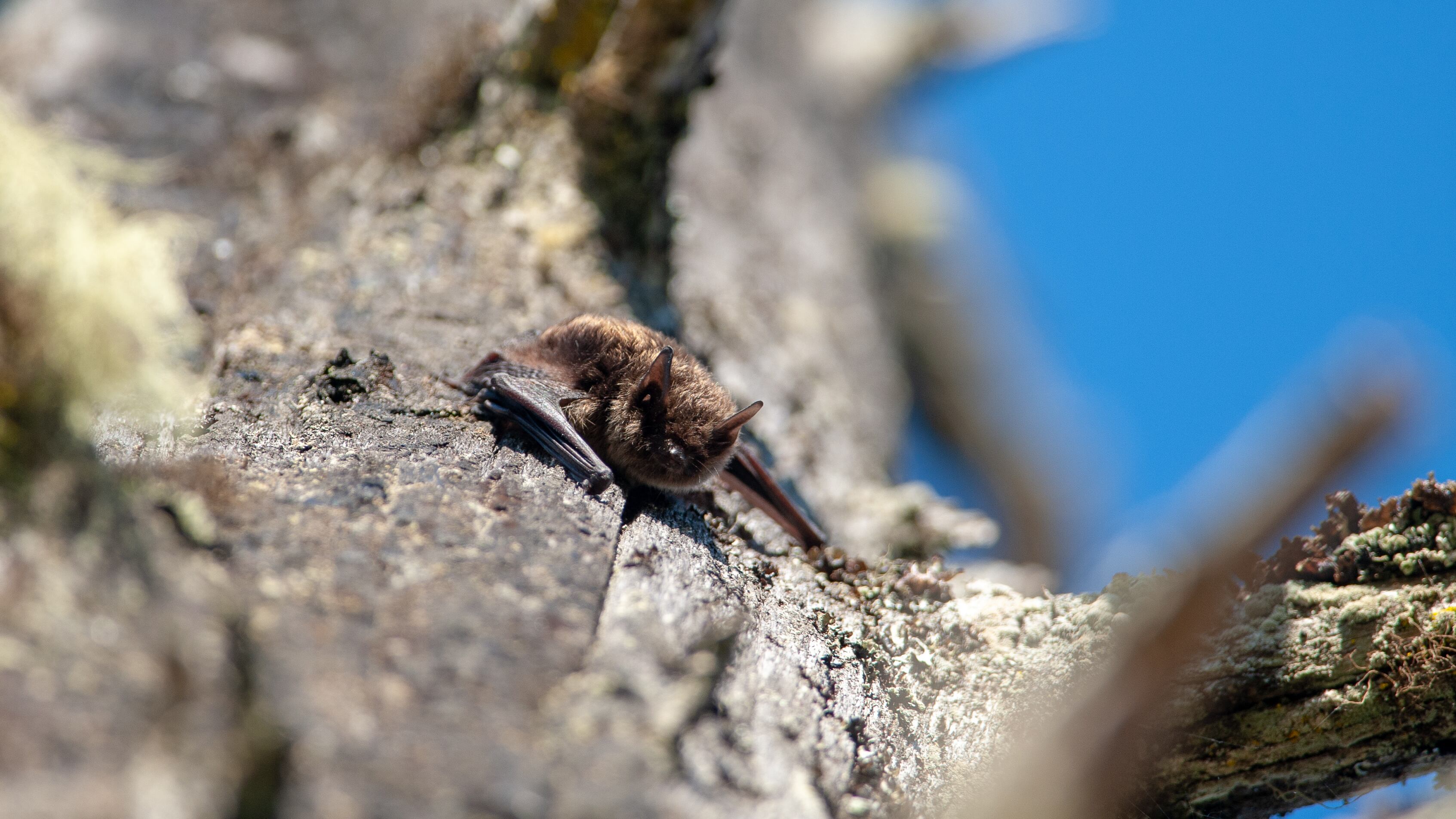On summer evenings, we used to hear the chirps and see the knuckle-ball swoopings of bats silhouetted in the darkling sky. We were recently startled by the realization that it’s been years since we’ve seen or heard any of these magnificent beasts. Have our senses deteriorated that badly, or is something sinister going on? —Robin and the Other Guy
It’s certainly true that, if left untreated, our night vision does deteriorate as we get older. That’s why I subscribe to a doctor-approved regimen of special vitamins that allows me to see all the bats I want. Granted, the doctor was Dr. Hunter S. Thompson and the bats often seem pretty hostile, but you can’t have everything.
Some readers will already be familiar with white-nose syndrome, or WNS, a fungal infection that has decimated North American bat populations. Characterized by what looks like a dusting of white material around the nose (speaking of Hunter Thompson), the fungus spreads through colonies of hibernating bats, often killing up to 90% of them. The somewhat uninspiringly named little brown bat, Oregon’s most abundant species, has been particularly hard hit.
So, obviously, that’s what happened to our bats, right? Well, no. So far, white-nose syndrome hasn’t been detected in Oregon, and a multiyear study published in 2019 found Oregon’s little brown bat population (unlike the little brown bat population east of the Rockies) holding steady. That probably won’t last—the disease turned up in Washington’s Yakima County last year—but for now, we can’t blame our missing bats on WNS.
The same study found bleaker news for another Oregon species, the hoary bat: Tens of thousands of them are killed by wind turbines each year, enough to put a significant dent in our hoary bat cohort. So, Robin, if your bats are hoary,* wind turbines could be responsible for their decline.
Then again, maybe they starved because of the “global entomofauna die-off.” Yeah, I hadn’t heard of it either. Apparently, it’s common knowledge among biologists that insect populations worldwide are in steep decline, which sounds like something that happens right before the shit really hits the fan in a Michael Crichton novel. That said, it does put the relatively minor tragedy of declining bat populations in the proper apocalyptic context. Vitamins, anyone?
*Conversely, if your whores are batty, you could be a pimp in a nursing home.
Questions? Send them to dr.know@wweek.com.

